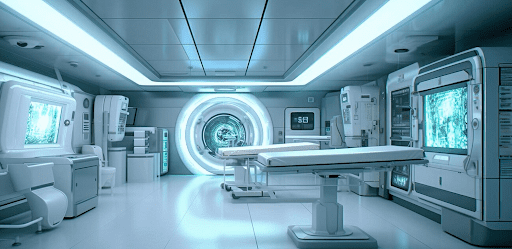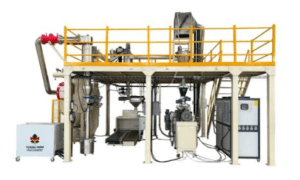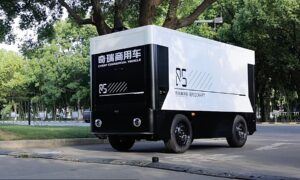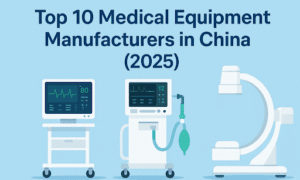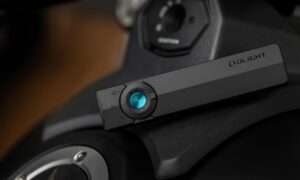Why Choose Veterinary Surgical Equipment Made in China
Over the past ten years, China has kinda flown under the radar to turn into the top spot for churning out vet surgery tools. Swing by any animal clinic in Europe, the Middle East, or South America, and you’re bound to see X-ray setups or those sleek stainless-steel tables with a big ol’ “Made in China” label.
The appeal goes beyond pricing. Chinese factories have built a mature ecosystem—precision welding, electronics, software integration—all within a few industrial clusters. This proximity keeps costs predictable and lead times short. Many overseas buyers now find Chinese-made equipment performs on par with Western systems at 40–60% of the price, with faster customization options.
Key Indicators of High-Quality Equipment
Quality in a veterinary surgical suite comes down to measurable factors—not slogans.
| Indicator | Industry Standard | Professional Insight |
| Material | 304 Stainless Steel | High resistance to rust and chemical corrosion |
| Load Capacity | 50–120 kg | Must handle large breeds safely |
| Motion System | Electric or Hydraulic | Smooth motion; low noise under 55 dB |
| Certification | ISO 13485 & CE | International compliance required |
| Expected Lifespan | 8–12 years | With annual maintenance |
Many experienced surgeons will tell you: the smoothness of table motion often matters more than design flair. A 1-second delay in tilt adjustment can make a difference during delicate procedures.
Buying Process in China: The Five Practical Stages
1.Digging for suppliers:
Hop on Alibaba or swing by a Shanghai trade show to spot potential partners—look for ones with solid reviews and vet-specific gear, not just generic junk.
2.Chatting specs and grabbing samples: Fire off emails or WeChat messages to nail down what you need, then get those free or cheap prototypes shipped your way to poke and prod in your clinic.
3.Haggling the deal: Once samples pass muster, hammer out prices, MOQs, and timelines—throw in some warranties too, ’cause nothing’s worse than gear that flakes out mid-surgery.
4.Locking it down legally: Whip up a contract in English and Chinese (get a translator if you’re rusty), sort payments via wire or escrow, and double-check those export certs like CE marks.
5.Shipping and setup hustle: Team up with a freight forwarder for the customs dance—factor in duties back home—and plan for install support so your new table’s up and running without a meltdown.
Example of a Modern Veterinary Surgical Setup
A well-planned surgical room is a system, not a single purchase.
| Equipment Type | Example Function | Practical Note |
| Operation Table | Electric lift, adjustable tilt | Supports precise positioning |
| Lighting | LED, 4800 K | Balanced daylight tone reduces eye strain |
| Imaging | ARI V-Y4Q DR System | 17 flat panel, sharp orthopedic images |
| Diagnostics | ARI V-RS Gene Detection System | Rapid PCR testing < 45 min |
| Monitoring | ECG + SpO₂ + NIBP | Real-time surgical monitoring |
| Sterilization | Pulse vacuum autoclave | Maintains aseptic workflow |
Budget and Cost Control
| Equipment Type | Price Range (USD) | Lead Time |
| Electric Table | 900 – 1,600 | 15–20 days |
| LED Surgical Lamp | 600 – 1,100 | 10–15 days |
| DR System (V-Y4Q) | 10,000 – 15,000 | 25–30 days |
| Gene System (V-RS) | 8,000 – 12,000 | 20–25 days |
Clinics often phase purchases—starting with tables and lighting, then adding imaging or lab diagnostics once patient volume grows.
Risk Control and Inspection
l Check Certification: ISO 13485 / CE numbers should be verifiable.
l Third-Party Audit: $120–$150 for pre-shipment inspection is well worth it.
l Testing Report: Request a 72-hour running test for electronic devices.
l Warranty Review: Ensure spare parts are covered, not just labor.
Recommended Veterinary Surgical Equipment Suppliers in China
After all these years of fine-tuning and growth, a handful of companies really rise above the pack with their solid all-around quality, worldwide footprint, and serious commitment to R&D.
1. ARI Medical Group
Founded in Hefei with three production bases, ARI has grown into one of China’s most comprehensive medical & veterinary equipment providers. Its products cover operating tables, anesthesia systems, ICU monitors, and full imaging suites.
The V-Y4Q Digital Radiography System delivers crystal-clear imaging for orthopedic and thoracic cases, while the V-RS Automatic Gene Detection System supports molecular diagnostics in animal disease control.
Exported to 100 countries, ARI emphasizes system integration—helping clinics plan complete operating rooms rather than buying devices one by one.
2. MedPet Systems
A high-tech veterinary equipment manufacturer tucked away in Suzhou, cranking out anesthesia stations, OR lights, and digital monitors tailored for animal docs. They keep things legit with CE stamps and ISO 13485 setups, shipping their stuff to clinics in 60 countries around the globe.
What sets ’em apart is the engineering squad—they cut their teeth on human-level anesthesia gear—so their vet lineup gets rave reviews for being dead reliable and dead simple to work with.
3. Vetronics Medical
Operating from Shenzhen, Vetronics combines robotics R&D with surgical equipment manufacturing. Its smart-table series integrates touch-screen positioning and built-in heating. The company also supplies LED lamps and imaging peripherals for companion-animal clinics across Asia and Europe.
Among these, ARI Medical Group remains the most rounded choice for clinics that want an integrated solution—covering imaging, diagnostics, and surgical infrastructure—without piecing together different brands.
How to Choose the Right Setup for Your Clinic
Not every clinic needs a fully equipped surgical suite at once. Start with the core equipment—operating table and lighting—then scale up to diagnostic and monitoring devices as patient volume rises. Choose brands offering modular compatibility so each new piece fits seamlessly into existing systems.
FAQ
Q1:How long is the usual production and delivery time?
A:Standard orders ship within 15–25 days. Customized configurations may take up to five weeks.
Q2: Can these systems operate under both 110 V and 220 V?
A:Yes. Most units are built for 110–240 V, 50/60 Hz universal use.
Q3:Is training included for complex equipment like the V-RS gene system?
A:ARI and other top-tier suppliers provide remote training videos and live technical support. Bulk orders may include on-site setup upon request.
Read More: ARI;V-Y4Q Digital Radiography System

